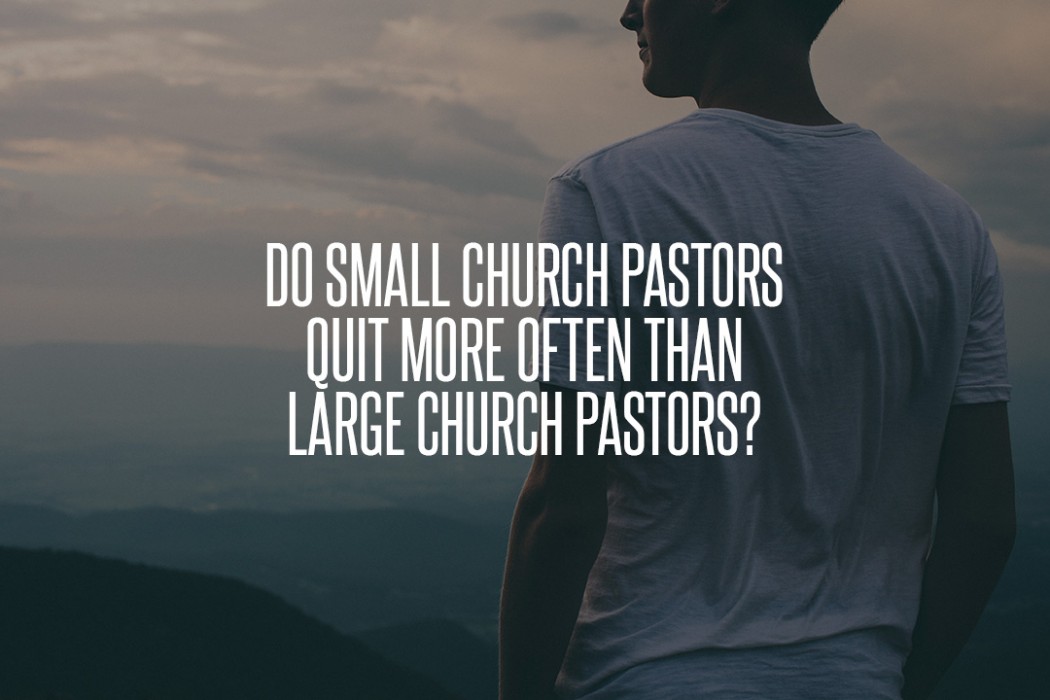You may be familiar with Leadership and Church Size Dynamics, an article written by Dr. Timothy Keller in 2006 on how church style, strengths and weaknesses, and the roles of its staff must change dramatically as church size increases. It’s a fantastic commentary that should be read and studied by every pastor, elder, deacon, lay leader, and churchgoer alike.
In the article Keller separates church size into five specific categories: house church, small church, medium-sized church, large church, and the very large church. He then breaks each category down to reveal it’s character, how it grows, and how the church can cross the threshold to the next size category.
Keller spends a significant portion of his time talking about the characteristics of the small church, and understandably so. According to the National Congregations Study, the average church in the United States has 76 regular participants in worship gatherings on Sunday mornings. The Pulpit & Pew national survey, which indicated “two-thirds of all pastors preach to a sanctuary filled with 100 attendees or less on a Sunday morning,” and demographics from our survey seem to support this. One hundred forty-seven (or 55%) of the 268 pastors who responded to our survey indicated they pastored churches with an average attendance of 40-200. This is significantly higher than the medium-sized church with an average Sunday attendance of 200-450, which came second in our survey at only fifteen percent (scroll to the bottom of this article to view our survey).
This probably comes as no surprise to you if you’ve been in or around American church culture for any good length of time: Most churches are small. So, naturally I had assumed that, because of the significantly higher quantity of clergy serving in small churches through America, we’d see a larger percentage of clergy within this category leave. But my assumption was incorrect. We discovered pastors were leaving at equal rates within each of the church size categories.
Another reason I had assumed a larger percentage of pastors would be exiting from small churches was based on the apparent added stress and pressures on pastors of churches this size. Keller makes a few observations that originally led me to this conclusion. “The [small church] pastor,” Keller notes, “is still primarily a shepherd. While in a larger church people will let you pastor them if you are a good preacher, in a smaller church the reverse is true: people will listen to your sermons if you are a good pastor.”
The challenge might be for the small church pastor who, in a small church, primarily considers his or herself a teaching pastor. Often this pastor might err on the side of performance, or finds his or her gifting in the area of preaching more than shepherding. Undoubtedly this is an arguable challenge but a challenge nonetheless, especially for those pastors brought up under exceptional preaching or those who attended seminary under professors who encouraged an excellence performance from the pulpit.
“Effective, loving shepherding of every member is the driving force of ministry, not leadership or even speaking ability,” Keller’s second argument states. “A pastor who says, ‘I shouldn’t have to shepherd every member, I’ve delegated that to my elders or small group leaders,’ is trying to practice large-church dynamics in a small-church environment.”
These two issues deal directly with the character of the pastor. If he spends most of his week on sermon preparation and delegation, then he will no doubt struggle in his position as small church pastor. But the third observation in Keller’s article is a characteristic – rather, an evolving demand – of the church and, if he or she is unaware, the small church pastor might not understand how to properly respond. The demand is this: that the pastor be both the shepherd and the administrator, a dual-responsibility that would challenge even the biggest workaholic.
“As the congregation grows the pastor of a small church will feel more and more need for administrative leadership skills,” Keller says. “Small churches do not require much in the way of vision casting or strategizing, but they do eventually present a need for program planning, mobilization of volunteers, and other administrative tasks.”
These three challenges alone could prove valid enough to send the small church pastor packing and, of which I had originally assumed, would cause our statistics to increase in the area of the small church. But as I said earlier, that was not so.
Of those 147 participants in our survey who said they had pastored a small church, forty-five (or 31%) indicated they had left the pastorate and are now expastors. In fact, the amount of those indicating they had left the ministry hovered around the thirty percent mark in each of the church size categories, giving us the idea that pastors are leaving at equal rates regardless of church size.


